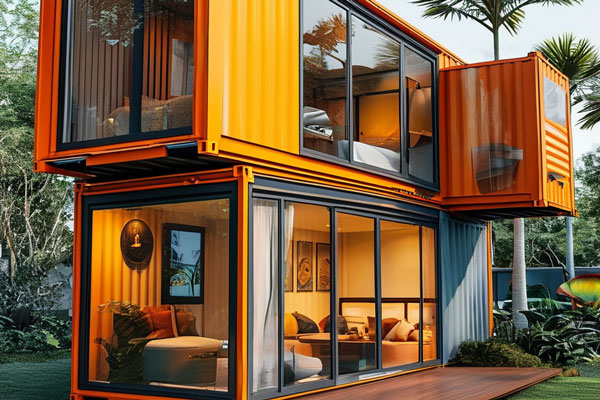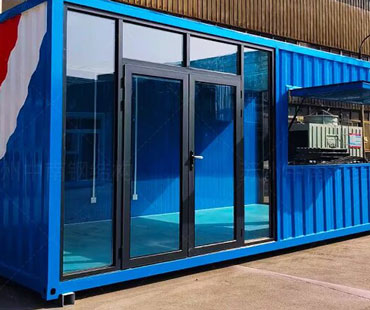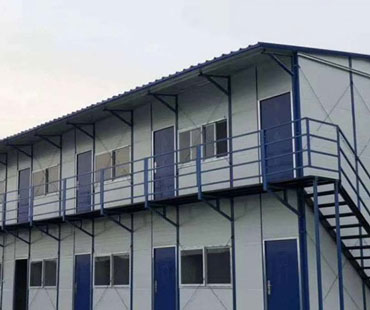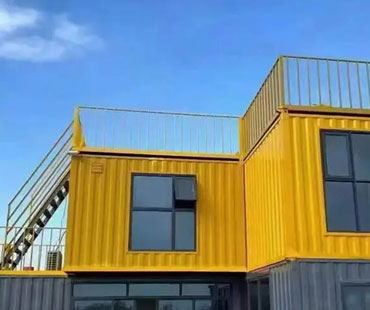In recent years, container architecture has emerged as a groundbreaking trend in urban development, offering innovative solutions to the challenges of housing, commercial space, and sustainable design. Utilizing repurposed shipping containers, architects and developers are redefining the landscape of cities around the world, creating functional, affordable, and environmentally friendly structures. This article explores the principles of container architecture, its benefits, and the new opportunities it presents for urban development.
The Concept of Container Architecture
Container architecture involves the use of shipping containers as building materials for various types of structures, including homes, offices, retail spaces, and community centers. These containers are designed to be modular, allowing for flexibility in design and ease of transport. The concept gained traction as cities faced rising housing costs, increasing population density, and a growing demand for sustainable construction practices.
Design Innovations
1.Modularity and Flexibility
One of the defining features of container architecture is its modular nature. Shipping containers come in standard sizes, making them easy to stack, combine, and customize. Designers can create multi-story buildings, single-family homes, or expansive commercial spaces by arranging containers in various configurations. This flexibility allows for creative designs that can adapt to specific site conditions and user needs.
2.Sustainable Practices
Container architecture is inherently sustainable, as it repurposes materials that would otherwise contribute to landfill waste. The use of shipping containers reduces the demand for traditional construction materials, leading to a lower carbon footprint. Additionally, many container buildings are designed with energy efficiency in mind, incorporating features such as solar panels, green roofs, and rainwater harvesting systems. This commitment to sustainability aligns with the growing emphasis on eco-friendly practices in urban development.
3.Aesthetic Appeal
Container architecture offers a unique aesthetic that blends industrial charm with modern design. The raw, corrugated exterior of shipping containers can be creatively enhanced through the use of paint, cladding, and landscaping. Interior spaces can be customized to create comfortable and stylish environments, showcasing the potential for container structures to be both functional and visually appealing.

Benefits of Container Architecture
1.Affordability
One of the most significant advantages of container architecture is cost-effectiveness. Shipping containers are relatively inexpensive, especially compared to traditional building materials. This affordability makes container homes an attractive option for individuals and families seeking affordable housing solutions in urban areas. Furthermore, the speed of construction can reduce labor costs, making it a viable solution for developers facing tight budgets.
2.Rapid Construction
The modular nature of container architecture allows for rapid construction times. Since containers are prefabricated, many components can be assembled off-site, significantly reducing on-site construction time. This rapid deployment is particularly beneficial in addressing urgent housing needs, such as in the aftermath of natural disasters or in areas experiencing housing shortages.
3.Versatility in Use
Container architecture is versatile and can be adapted for various purposes. From temporary pop-up shops and food stalls to permanent housing and office spaces, containers can serve multiple functions. This adaptability makes them particularly appealing in urban environments where space is limited and the demand for diverse uses is high.
New Opportunities for Urban Development
1.Addressing Housing Shortages
As urban populations continue to grow, the demand for affordable housing has reached critical levels. Container architecture provides a practical solution to this pressing issue, offering a quick and cost-effective way to create housing units. By transforming underutilized spaces, such as vacant lots or old industrial sites, cities can increase their housing stock without extensive new construction.
2.Community Engagement and Revitalization
Container architecture can play a vital role in community engagement and urban revitalization. Developers can create community hubs that bring people together, such as parks, markets, and cultural spaces using shipping containers. These projects foster social interaction, promote local businesses, and contribute to the vibrancy of neighborhoods.
3.Temporary Solutions for Urban Challenges
Container buildings can serve as temporary solutions to various urban challenges, including disaster relief, emergency shelters, and temporary housing for displaced populations. Their portability and ease of assembly make them ideal for rapid response scenarios, allowing cities to adapt quickly to changing circumstances.
Several cities around the world have embraced container architecture, showcasing its potential for innovative urban development:
-The Container Park in Las Vegas, Nevada: This unique space combines retail, dining, and entertainment within repurposed shipping containers, creating a vibrant community hub that attracts locals and tourists alike.
-The Cargotecture Project in New York City: This initiative features modular container homes designed to provide affordable housing solutions in the city, addressing the urgent need for low-cost living options.
-The 1:1 House in Amsterdam, Netherlands: This innovative residential project uses shipping containers to create sustainable housing that is both stylish and affordable, demonstrating the potential of container architecture in urban settings.
Container architecture represents a thrilling frontier in urban development, merging innovative design with practical solutions to some of the most pressing challenges facing cities today. As the world continues to urbanize, the importance of sustainable, affordable, and adaptable housing solutions cannot be overstated. By harnessing the potential of shipping containers, architects, developers, and communities can create vibrant, functional spaces that not only enhance urban living but also foster a sense of community and resilience.


